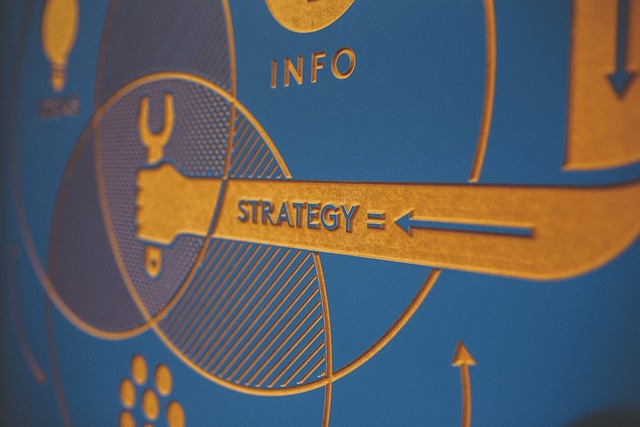How to Use AI to Enhance User Experience (UX) Design? Artificial Intelligence (AI) is transforming various industries, and UX design is no exception. By integrating AI into UX design, companies can create personalized experiences, automate design processes, and optimize user interfaces in ways that were previously unimaginable. AI in UX design can make the user journey smoother, more intuitive, and highly engaging. With tools powered by AI, designers can predict user behavior, test interfaces, and even adapt designs in real-time to meet specific user needs. This blog will explore how AI can enhance UX design and provide actionable insights into how you can apply AI to improve your design processes.
AI in UX Design
AI is quickly becoming an indispensable tool for UX designers. It allows for a deeper understanding of user behavior, preferences, and patterns. Using AI-powered analytics and algorithms, UX designers can personalize the user experience by adjusting interfaces based on user interactions. AI can also automate tasks that would otherwise be time-consuming, allowing designers to focus on more creative aspects of the design process. Furthermore, AI tools can provide insights into how users interact with designs, helping improve the design without the need for manual testing.
For example, AI can analyze large datasets from user interactions and identify pain points or opportunities for optimization. This data-driven approach enables designers to create highly personalized and responsive user experiences that are tailored to individual users. AI also streamlines the entire design workflow, making it easier to test, iterate, and improve the final product.
Artificial Intelligence for User Experience
AI’s impact on user experience is profound, as it empowers designers to craft experiences that feel natural and intuitive. By leveraging AI, designers can predict user behavior and adjust the user interface accordingly. For instance, AI can suggest design modifications based on how users interact with a site or app, enhancing usability without the need for manual adjustments.
Another key benefit of AI in user experience is its ability to analyze user data. By processing vast amounts of user behavior data, AI can identify trends, preferences, and pain points. This allows UX designers to optimize their designs for better user engagement. The ability to anticipate user needs through AI ensures that the design is always in sync with the evolving preferences of the target audience.
AI-Powered UX Optimization
AI-powered UX optimization takes a proactive approach to design. Instead of waiting for users to identify issues with a design, AI can predict potential problems and suggest improvements before they arise. Through machine learning algorithms, AI can detect patterns in how users interact with a product or service, flagging areas that need attention.
For example, AI can track metrics such as load times, click-through rates, and user retention, providing valuable insights into how to optimize the user experience. AI can then apply these insights to make real-time adjustments, improving the design on the fly. This continuous optimization ensures that the user experience is always at its best, even as user behavior and expectations evolve over time.
Personalized UX Design with AI
Personalization is one of the most powerful benefits of integrating AI into UX design. With AI, designers can create tailored user experiences that adapt to individual needs, preferences, and behaviors. By collecting data from user interactions, AI can provide insights into what users want and how they interact with the interface.
For instance, an e-commerce website can use AI to recommend products based on a user’s past purchases, browsing history, and preferences. Similarly, AI can personalize content delivery on a news or media site, ensuring that users see content that aligns with their interests. By offering a personalized experience, AI helps businesses build stronger relationships with users, increasing engagement and satisfaction.
AI Tools for UX Designers
AI tools are revolutionizing how UX designers approach their work. From automating repetitive tasks to providing data-driven insights, these tools can save designers time and improve their output. Tools like Figma’s AI-based design assistant and Adobe’s Sensei are making it easier for designers to automate tasks like image resizing, layout adjustments, and even content recommendations.
These tools use machine learning to understand design patterns and suggest improvements. For example, AI can analyze past design choices to recommend new layouts or styles that match the user’s design preferences. By integrating these AI tools into their workflow, designers can enhance their efficiency and creativity, ultimately leading to better user experiences.
Improving User Experience with AI
AI enhances user experience in many ways, including streamlining processes, increasing personalization, and automating time-consuming tasks. AI’s ability to understand user behavior and predict preferences allows for a more responsive and user-centric design approach. By automating design decisions, AI reduces human error and ensures that users always have access to the most relevant content or features.
Moreover, AI can be used to monitor user satisfaction in real-time, providing designers with immediate feedback on how users are interacting with a product. This data allows for quick adjustments to be made, ensuring that the user experience remains optimal.
AI and UX Research
UX research is a critical part of the design process, and AI is making this process more efficient and insightful. AI tools can analyze user data, such as click patterns, heat maps, and session recordings, to help UX researchers understand how users navigate interfaces. AI can also assist in conducting surveys, gathering user feedback, and synthesizing results to uncover trends and preferences.
With AI, researchers can gather more detailed insights into user behavior, enabling designers to make more informed decisions. By automating the analysis of user feedback, AI can accelerate the UX research process, providing real-time insights that can be immediately acted upon.
AI for User Interface Design
User interface (UI) design is essential to creating a seamless user experience, and AI is enhancing this process by optimizing UI elements for better usability. AI tools can help automate UI design by suggesting layouts, color schemes, and typography based on user preferences and behavioral patterns.
For example, AI-driven UI design tools can adjust the placement of buttons, navigation menus, and text to make them more accessible based on how users interact with the interface. By using AI to optimize UI elements, designers can create interfaces that are not only visually appealing but also user-friendly.
Predictive Analytics in UX Design
Predictive analytics, powered by AI, is an invaluable tool in UX design. By analyzing historical user data, AI can forecast how users are likely to behave in the future. This insight allows UX designers to make proactive design decisions, anticipating user needs before they arise.
For instance, AI can predict which features will be most popular with users based on past behavior, allowing designers to prioritize these features. Predictive analytics also helps in identifying potential issues before they become major problems, allowing for timely interventions to maintain a positive user experience.
AI-Driven User Testing
User testing is an essential part of the UX design process, and AI is making this process more efficient and effective. AI-driven user testing platforms can simulate how real users would interact with a product, providing insights into potential design flaws and usability issues.
By using AI for user testing, designers can get immediate feedback on their designs, allowing for faster iterations. AI can also analyze user behavior during testing, identifying patterns and suggesting areas for improvement. This data-driven approach to user testing ensures that designs are optimized for real-world use before they are launched.
AI for Usability Testing
Usability testing is crucial to understanding how users interact with a product, and AI can enhance this process by automating key tasks. AI can track user interactions, analyze behaviors, and provide actionable insights into usability issues.
For example, AI can identify areas where users may be struggling, such as difficult navigation or confusing layouts. By using AI to streamline usability testing, designers can identify problems early in the design process, ensuring that the final product is easy to use and intuitive.
Conclusion
Incorporating AI into UX design can significantly enhance the user experience by automating tasks, optimizing interfaces, and personalizing interactions. From predictive analytics and AI-powered tools to personalized content and user testing, AI is helping designers create more intuitive and engaging experiences. As AI continues to evolve, its potential to transform UX design will only grow, offering new opportunities to create user-centered designs that are both efficient and effective. By embracing AI in your design process, you can ensure that your products not only meet but exceed user expectations.






